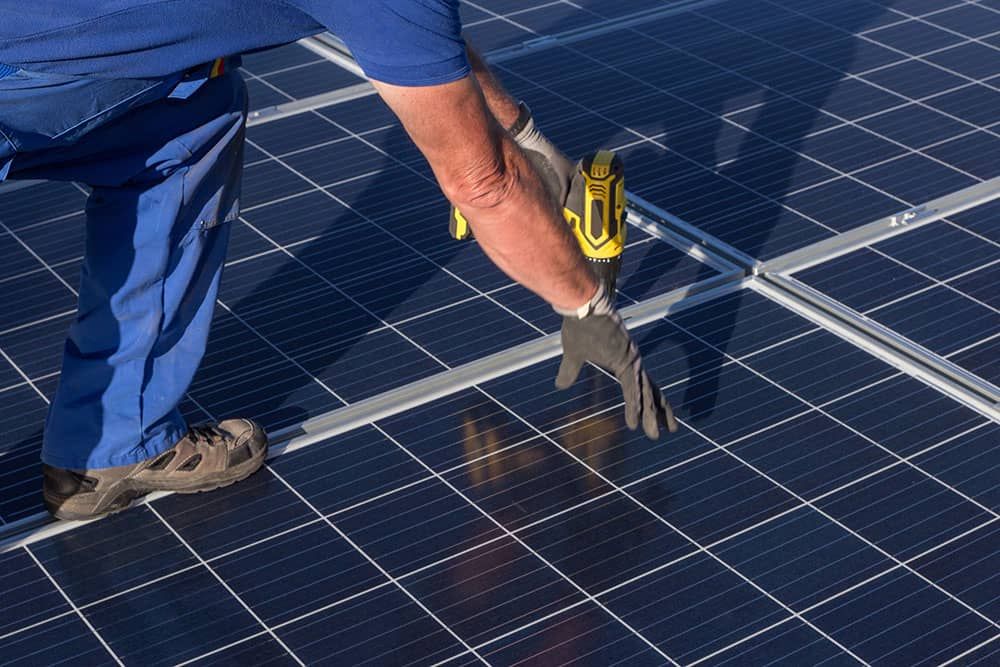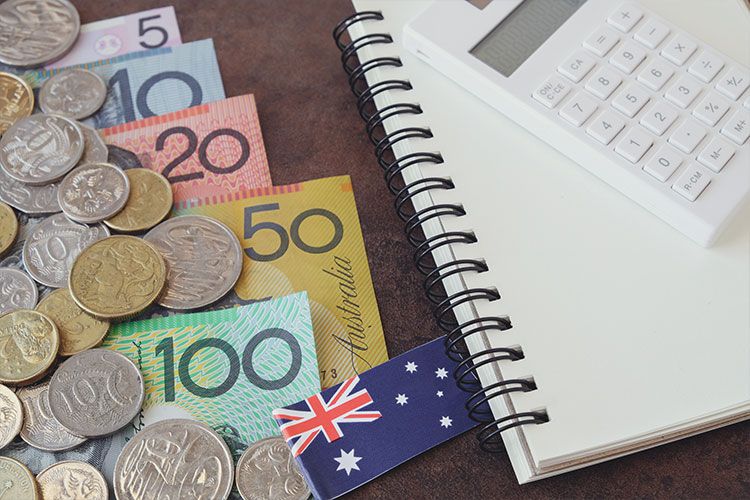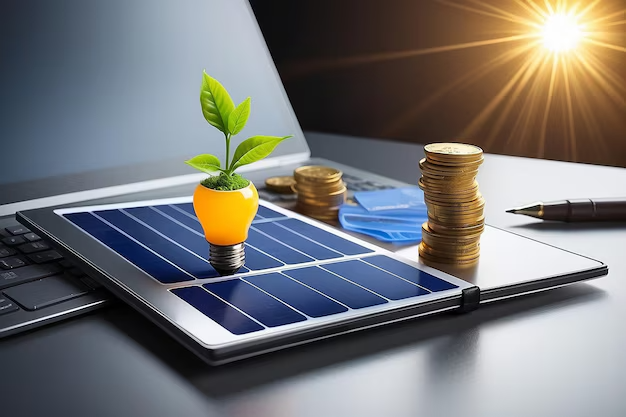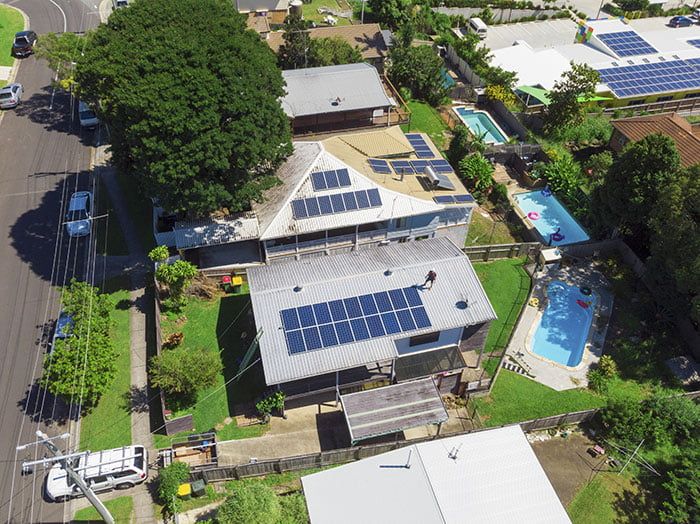Western Australia, especially Perth, has one of the best climates for solar systems. The growing number of installations in residential households and commercial properties shows the continuous demand for renewable energy, not just in the state but the whole country as well.
Power bills continue to climb in Western Australia. At the same time, solar prices are going down, which are pushing businesses and homes to install solar. For this reason, there was a 33% increase in solar use and installation in 2017.
The abundant sunshine helps greatly, although there is still a lot to go. In fact, Western Australia sits behind the competition, especially compared to South Australia, with almost 50% of properties using renewable power sources. In January 2018 alone, there were more than 16,000 installations in SA.

Nevertheless, interest groups comprised of religious organisations, farmers, and doctors have joined forces to ensure that the state meets the target of 100% use of renewable energy in homes and businesses by 2030. Although many other analysts say it is an ambitious goal, it may still be possible to reach almost 45% by that time.
Some surveys also revealed that ten of Western Australia suburbs are in the top 20 Australian places that have recently adopted solar energy, with Mandurah in the lead.
The solar rebate offers homes in Perth and Western Australia up to 10% for the purchase and installation of the system. Households can use the discount to lower their electricity bills, as well as their gas emissions.
Those who live in the state should know that the solar rebate is only applicable to one household for every package. For instance, you cannot get a solar rebate for your PV system if you already have rebates for using solar hot water.
A while back, stories about solar rebates getting cancelled frightened many people. For them, it meant that investing in solar panels will not be as wise as before. The good news is that you can still benefit from these rebates if you act now.
The Western Australian government still has subsidies to people who utilise solar energy for powering their homes. Substantial incentives are available, making the system more affordable than ever.
The problem with Western Australia is that there is a limited energy rebate scheme compared to other states. Residents in Perth still find that their energy bills are challenging to pay. Battery rebates, for instance, are missing and the Western Australian government expressed its opposite views against solar subsidies.
For the WA government, these rebates should be entirely scrapped. At the moment, residents and businesses can still enjoy benefits from feed-in tariffs. However, upfront rebates are not available beyond those that are already given by the federal government.

Unfortunately, it is unavoidable for the rebates to be cut soon enough. For now, it is still alive, allowing you to get a large cut when you purchase. A few things that you have to bear in mind are:

For 2020, the solar power rebate value in Western Australia is $814, which is equivalent to 22 STCs for a 1.5kW system. If you have a 2kW system, you will get $1,110 or 30 STCs. These estimates are based on a $37 STC value.
To get the value of STCs, you will only have to multiply the STC in its dollar value based on the STCs your system is entitled to. As mentioned earlier, the cost can keep rising and falling depending on demand, among other factors. Typically, however, it ranges from $34 to $40.
In this case, if you have a 5kW system, you can get as much as $2,812 in rebates, which is equal to 76 STCs.
With so many good things about the rebate, there are a few questions that linger: will it soon end? Will it still be a wise investment to purchase solar in Perth? Is solar still a good choice, or should you stick to your conventional power source?
Upfront subsidies will soon be a thing of the past. The WA Energy Minister, Ben Wyatt, talking about how he supports the reduction or ultimate scrapping of these discounts. The future does look grim, especially if you are still saving to install solar. Originally though, the entire subsidy has its completion by 2030, but there are reports that it will be scrapped by 2021.
However, the truth is that solar photovoltaic systems have reduced prices significantly. The absence of these rebates may seem irrelevant now, particularly if you compare the cost of solar several years ago.
Currently, you can still get some incentive from Synergy or Western Power. The energy retailers are required to pay homes with solar 7.1c per kWh as the minimum feed-in tariff. When solar was still new in the country, homeowners were given a high feed-in tariff of up to 51c per kWh based on the energy they sent back to the grid. This offer no longer exists today, and a lower credit replaced it to cater to large properties.
Rebates are often referred to as small-scale technology certificates or STCs. The Renewable Energy Act in 2000 created the STCs, which were awarded to individuals who install renewable energy systems, including solar. Whether it is for business or home use, these small-scale technology certificates are provided to everyone.
The process can be quite confusing, especially for those who are new to solar. You cannot claim the STCs right away. To make it easier, EasySolar can exchange the certificates with you as a form of a solar power purchase or installation discount – upfront.

When you buy a solar system in Western Australia, you are automatically given the right to obtain the credits or the STCs. You can opt to use the STCs, which means you surrender them to the open trading market. Therefore, it works like shares where companies will purchase the credits.
Put simply, STCs are a form of currency for renewable energy. You can think of it as a carbon credit, which works like a renewable energy unit. In Perth and the rest of Australia, one STC is equal to one megawatt-hour (mW/h) of power for more than 15 years.
You may be curious as to how many STCs you can receive. It depends on a variety of factors, but you can check the government website to determine how much you are entitled to.
Since STCs are tradable, it will fluctuate, mostly based on the supply and demand trend. The best thing about buying solar panels and the whole system now is that technology has reached an all-time high. Therefore, you can get the most out of your investment.
In 2009, there was a problem with the electricity costs in the state, which were at a steady increase. Electricity tariffs started rising in July of 2017. Households and businesses were required to pay three per cent more of their bills.
It was why solar became incredibly popular, not just in Australia but the rest of the world. The government also helped increase awareness by endorsing the use of these solar systems. Many people then learned that they could save even more with the rebates.

The Australian Government offers plenty of solar rebates, which are a part of the Renewable Energy Target scheme. This particular scheme aims to increase the number of users that utilise renewable resources, whether for their home or business. Another purpose is to help reduce the emissions of greenhouse gases in the state and throughout the country.
The Small-Scale Renewable Energy Scheme (SRES) is the second portion of this Renewable Energy Target initiative. With the SRES, lucrative incentives became available, encouraging more people to install solar systems.
As part of the SRES, STCs and feed-in tariffs were created, which are also applicable not everyone, including homeowners, landlords, businesses, educational institutions, and even renters.
Feed-in tariffs pay consumers in Perth for the excess electricity that they have generated through their system. You can think of it as selling this excess power back to the grid. The electricity retailer, Synergy, will pay the tariff if you are eligible. Key eligibilities include:
The solar PV system should be connected to the grid.
It is installed on a home or organisation. Other conditions may still apply.
There is also the discussion about home battery rebates, which many Western Australians believe they should have as well. Battery storage rebate schemes exist in several other parts of the country, except the Perth market. If you are using lithium battery storage, you can get a power bill reduction of up to 80%. That is if the WA state government approves this scheme.
With the rebate ending soon, it is never too late to have a solar system installed on your rooftop. Contact Easy Solar today to learn more about rebates and how you can claim yours.
Copyright © 2024 Easy Solar.